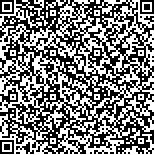下载中心
优秀审稿专家
优秀论文
相关链接
摘要

定量遥感产品的质量控制和质量评价是产品生产过程的重要环节,生成的产品质量信息对用户具有重要的参考价值。对于算法较为复杂,涉及诸多输入数据和计算环节的遥感数据产品,质量控制和质量评价是一个难点。本文以一个极轨卫星与静止卫星结合的光合有效辐射(PAR)产品算法为例,分析了定量遥感产品质量控制和质量评价的方法。在确定总体技术框架的基础上,详细描述了数据输入及产品输出质量控制标识体系的建立、质量控制方法实施以及产品质量评价具体方案。光合有效辐射估算需要多源遥感数据和较多空间数据,导致最终产品不确定性的来源较多。本研究通过算法解析、产品的不确定性分析以及建立质量标识体系等方法来确定质量控制方案,从而可以利用质量控制标识追溯到输入数据和每一个中间处理过程的质量或者误差,并最终生成产品的总体质量等级。最后简要介绍了利用地面实测数据和产品质量标识对产品进行质量评价的方法。
关键词:
定量遥感产品 质量控制 质量评价 光合有效辐射(PAR)Quality control and quality assessment are important tasks in developing quantitative remote sensing products. Product quality can provide detailed information for users. However, quality control and assessment of remote sensing products may be difficult to achieve, particularly for products with complicated algorithms that require the verification and assessment of numerous inputs, which is time-consuming. This paper describes a proposed method of quality control and quality assessment for Photosynthetically Active Radiation (PAR) products. Within the design of the overall technology framework, the detailed input data, the quality control system for the products, and the method of quality control and quality assessment are clearly demonstrated. Multisource remote sensing data and other geographical data for PAR estimates can result in numerous uncertainties. Thus, the quality control scheme was established using algorithm uncertainty analysis, quality system design and multiple levels of the products, and each possible uncertainty/error was recorded in the overall assessment of the products. The quality assessment method is briefly described using the ground measured data and quality designation of products.

